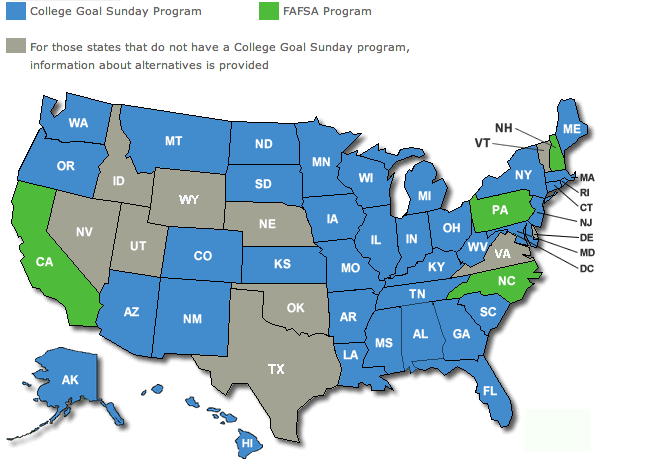
It’s FAFSA season–and if you haven’t completed your Free Application for Federal Student Aid, now’s the time to do it.
This new infographic from CampusLogic shows some interesting facts about the FAFSA that might surprise you.
While college is extremely expensive, there’s a lot of free money out there going unclaimed.
In fact, according to a new analysis by NerdScholar, U.S. high school graduates left over $2.9 billion in free federal grant money on the table last academic year.
How’d they miss out on the free money?
They didn’t fill out the Free Application for Federal Student Aid (FAFSA).

Applying for financial aid can get confusing.
It can be difficult for families to keep track of all the different types of financial aid available, from grants to student loans.
But this helpful infographic from Southern New Hampshire University makes it a bit easier.

If you have a child in college this coming year, it’s time to start filling out the Free Application for Federal Student Aid (FAFSA) at fafsa.gov.
When completing the application, it’s important to make sure you’re not making any major mistakes that could jeopardize your student’s chances of receiving financial aid.
Check out the infographic from TurboTax to find out 6 most common mistakes people make on the FAFSA so that you can maximize your chance of receiving grants, work-study, and other forms of financial aid to help pay for college.
How that January 1 has come and gone, it’s time for college-bound families to start filling out the Free Application for Federal Student Aid (FAFSA).
The video below from Censtible Student clearly explains the basics of the FAFSA, including what you need to file and how to fill it out.
Even as college costs rise, millions of students are missing out on the opportunity to get free money for college.
According to an analysis of federal data by Mark Kantrowitz, senior vice president at Edvisors Network, about 2 million students could have qualified for the need-based Federal Pell Grant during the 2011-12 academic year.
Of that group, 1.3 million would have qualified for a full Pell Grant of $5,645 for the 2013-14 academic year. That’s a free $22,580 over 4 years. If these students had instead borrowed loans to cover that amount, they’d have to pay it all back, plus interest.
So why didn’t these student receive this free money for college?
They didn’t file the Free Application for Federal Student Aid (FAFSA).
Whether you or your child is preparing for college or already enrolled, your family can benefit from working with a financial aid consultant to save time and money on college.
Here are 9 reasons you should consider working with a financial aid consultant.

Need help filling out your FAFSA? There’s likely a FAFSA filing event happening near you in the next couple of months.
Check out this map and click on your state for a list of locations, dates, and times for events happening in your state.
Compared to private student loans, whose interest rates vary depending on the borrower’s credit history, federal student loans are a steal. But according to USA Today, a large percentage of private loan borrowers don’t maximize their borrowing of federal student loans.
In fact, the newspaper found that more than half of private loan borrowers failed to max out on federal student loans, and a quarter didn’t take out any federal loans.
This is quite alarming and demonstrates the need for education about the differences between federal and private student loans. Unlike federal student loans, private student loans can have variable interest rates, some greater than 18%. This substantially increase the total amount you repay.

Getting ready to go to college or have a child who is? It’s time to fill out the Free Application for Federal Student Aid (FAFSA).
Many parents and students have misconceptions about what the FAFSA is and who should fill it out. Some families don’t bother because they assume they make too much money to qualify for federal aid.
But confusion about the FAFSA can cost you–you may lose out on financial aid, including grants, scholarships, and student loans.